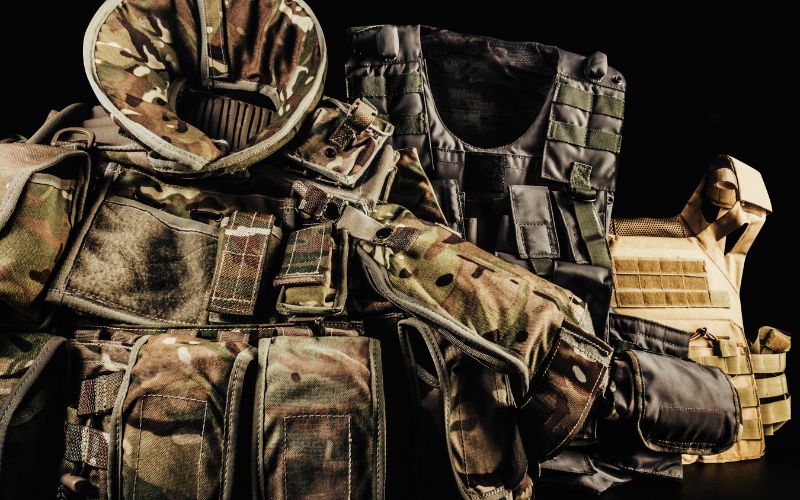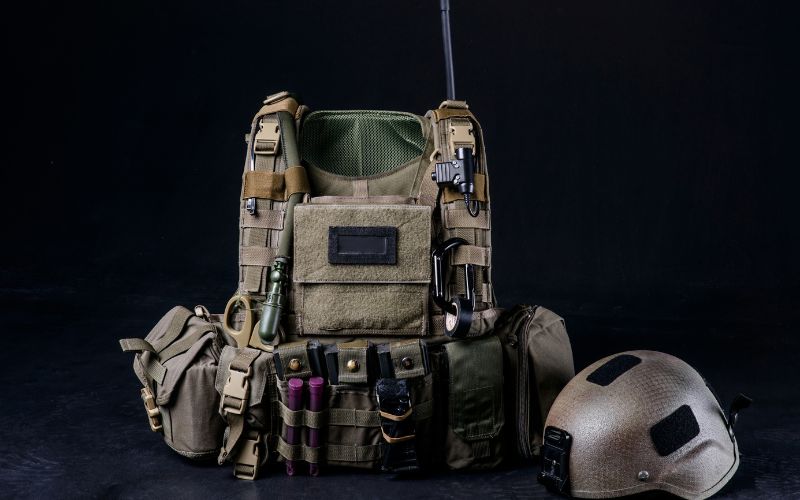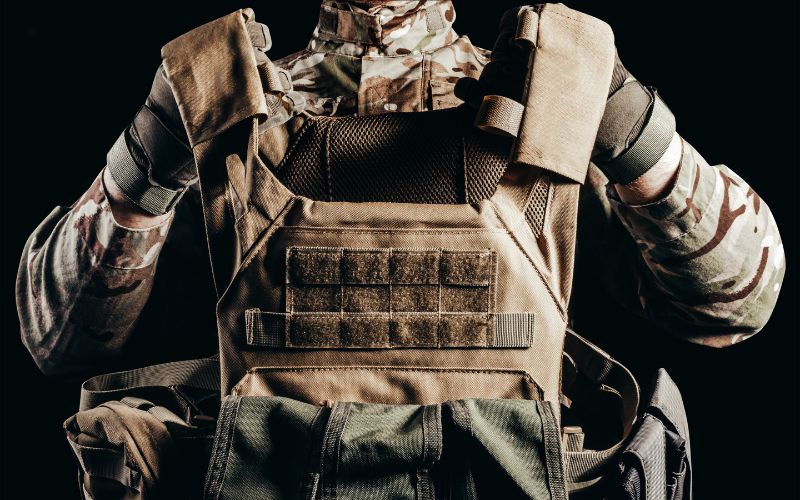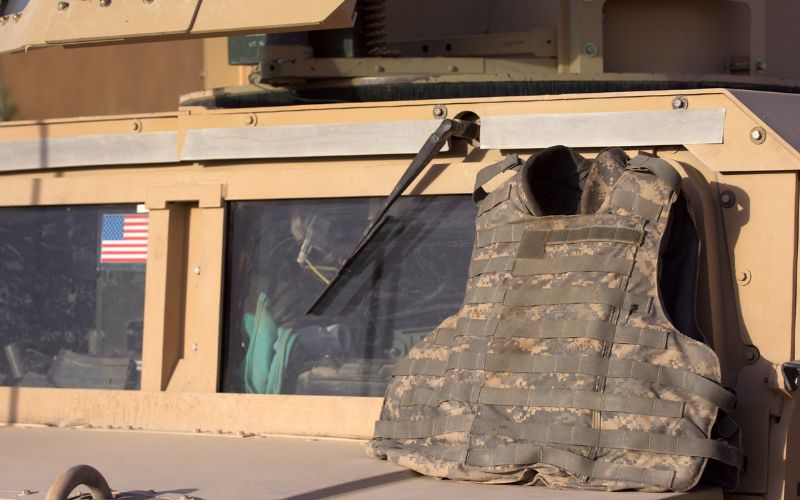Comparing Different Types Of Body Armor: Soft vs. Hard Plates

Personal protection is paramount in high-risk environments, and body armor is important in ensuring safety. Selecting the right type of body armor—soft or hard—can significantly influence safety and performance. Soft body armor offers flexibility and comfort, making it suitable for low—to moderate-threat situations. In contrast, hard body armor protects against high-caliber bullets and rifle fire but can be heavier and more restrictive.
Knowing the features and disadvantages of these two types of body armor is crucial for making the right decision tailored to your specific needs and threat levels. This Chase tactical guide will explore these aspects to help you choose the most appropriate body armor for your circumstances.
Importance Of Wearing Body Armor
The importance of wearing body armor cannot be overstated, especially for individuals in high-risk professions such as law enforcement and the military. Body armor provides essential protection against ballistic threats, stab wounds, and blunt force trauma, significantly reducing the risk of fatal injuries. Body armor enhances personal safety, allowing individuals to perform their duties with greater self-confidence and effectiveness.
Body armor also deters potential attackers, as the wearer is protected. Additionally, it can offer peace of mind to the wearer and their loved ones, as a critical layer of defense is in place. Overall, the importance of wearing body armor lies in its ability to save lives and ensure safety in dangerous situations.
Soft Body Armor

Soft body armors are made from layers of woven or laminated fibers, such as Kevlar or Dyneema. These materials provide a lightweight and flexible solution for protection against low-velocity projectiles.
Key Characteristics Of Soft Body Armor
- Flexibility and Comfort: Soft body armor is designed to be worn close to the body and is often used in concealed vests. Its flexibility allows for movement, making it comfortable for extended wear.
- Protection Level: Rated as Level II or IIIA by the National Institute of Justice (NIJ), soft armor is effective against most handgun bullets but not designed for rifle fire.
- Weight: Soft armor is lightweight, reducing fatigue and allowing for better mobility.
- Usage: Commonly used by law enforcement, security personnel, and individuals needing discreet protection in everyday settings.
Downside Of Soft Body Armor
- Ineffective against high-velocity rifle rounds.
- It is more susceptible to damage and wear over time than hard armor.
- It may require replacement after a hit as the fibers can become compromised.
Hard Body Armor

Hard body armor consists of rigid ceramic, steel, or polyethylene plates designed to stop high-velocity rounds, including rifle bullets.
Key Characteristics Of Hard Body Armor
- High-Level Protection: The NIJ rates hard armor as Level III or IV, which means it can stop rifle rounds. This makes it essential tactical gear suitable for military and high-risk law enforcement operations.
- Weight and Bulk: Hard plates are heavier and bulkier than soft armor, reducing mobility and increasing fatigue during prolonged use.
- Durability: Hard armor plates can withstand multiple hits in the same area without compromising protection, though ceramic plates can crack if dropped or struck.
- Usage: Typically used in tactical situations, such as military combat, SWAT operations, and high-threat security details.
Downside Of Hard Body Armor
- It can restrict movement and cause fatigue over long periods.
- It’s generally more expensive than soft armor.
- Ceramic plates can crack if mishandled, requiring careful maintenance.
Comparing Soft & Hard Body Armor
When comparing soft and hard body armor, it’s important to consider the level of protection, comfort and mobility, cost, durability, weight and bulk, and application suitability.
Level Of Protection
Soft armor protects against most handgun threats, making it ideal for scenarios where lightweight and concealable armor is needed. Hard armor is essential for environments with prevalent rifle threats, as it can stop higher-velocity projectiles.
Comfort And Mobility
Due to its flexible and lightweight design, soft body armor excels in comfort and mobility. This makes it suitable for long periods of wear, especially in undercover or routine law enforcement duties. While offering superior protection, hard body armor can be cumbersome and restrictive, impacting agility and endurance during extended operations.
Cost
The cost of body armor varies significantly based on the materials and level of protection. Generally, soft body armor is less expensive than hard armor. However, the choice should not be based solely on price but on the specific threats and the required level of protection.
Durability And Maintenance
Hard body armor, particularly those made from steel or advanced ceramics, tends to be more durable and resistant to multiple impacts. Soft body armor, while effective, may require more frequent replacement after taking a hit, as the fibers can become compromised. Maintenance for both types includes regular inspection for damage and proper storage to prevent degradation.
Weight And Bulk
Soft armor’s lightweight and flexible nature makes it less intrusive and easier to wear under clothing, which is crucial for covert operations. Hard armor adds significant weight and bulk, which can be a disadvantage in situations requiring speed and maneuverability.
Application And Suitability
Choosing between soft and hard armor depends largely on the specific application and threat level. Soft body armor is typically sufficient for everyday law enforcement duties or personal protection, where the primary threat is handguns. In contrast, military personnel and law enforcement officers facing rifle threats will benefit more from the enhanced safety of hard body armor.
How To Choose The Right Body Armor

When selecting body armor, consider several factors to ensure optimal protection and performance:
- Threat Assessment: Understand the level of threat you are likely to encounter. This will determine whether you need both soft and hard or a combination.
- Comfort and Fit: Proper fit and comfort of body armor are crucial, especially for extended wear. Ill-fitting armor can hinder movement and reduce overall effectiveness.
- Mobility Requirements: Consider the level of mobility required for your role. Soft armor might be more appropriate for roles requiring high agility, such as patrol officers.
- Durability Needs: Assess the durability requirements based on the operational environment. Hard armor offers greater durability for high-impact scenarios.
- Budget Constraints: While cost should not be the sole deciding factor, balancing the budget and the necessary level of protection is important.
Conclusion
In the realm of personal protection, both soft and hard body armor have their distinct advantages and limitations. Soft body armor offers comfort, flexibility, and sufficient protection against handgun threats, making it ideal for everyday use and low-risk environments. With its superior protection against rifle rounds, hard body armor is essential for high-risk scenarios but comes with added weight and reduced mobility.
